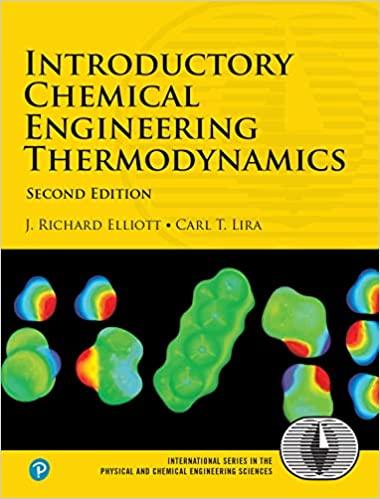The enthalpy of normal liquids changes nearly linearly with temperature. Therefore, in a single-pass countercurrent heat exchanger
Question:
The enthalpy of normal liquids changes nearly linearly with temperature. Therefore, in a single-pass countercurrent heat exchanger for two normal liquids, the temperature profiles of both fluids are nearly linear. However, the enthalpy of a high-pressure gas can be nonlinearly related to temperature because the constant pressure heat capacity becomes very large in the vicinity of the critical point. For example, consider a countercurrent heat exchanger to cool a CO2 stream entering at 8.6 MPa and 115 °C. The outlet is to be 8.6 MPa and 22°C. The cooling is to be performed using a countercurrent stream of water that enters at 10°C. Use a basis of l mol/min of CO2.
(a) Plot the CO2 temperature (°C) on the ordinate versus H on the abscissa, using H = 0 for the outlet state as the reference state.
(b) Since dHwater/dx dHCO2/dx along a differential length, dx, of countercurrent of heat exchanger, the corresponding plot of T versus H for water (using the inlet state as the reference state) will show the water temperature profile for the stream that contacts the CO2. The water profile must remain below the CO2 profile for the water stream to be cooler than the CO2. If the water profile touches the CO2 profile, the location is known as a pinch point and the heat exchanger would need to be infinitely big. What is the maximum water outlet temperature that can be feasibly obtained for an infinitely sized heat exchanger?
Step by Step Answer:

Introductory Chemical Engineering Thermodynamics
ISBN: 9780136068549
2nd Edition
Authors: J. Elliott, Carl Lira




